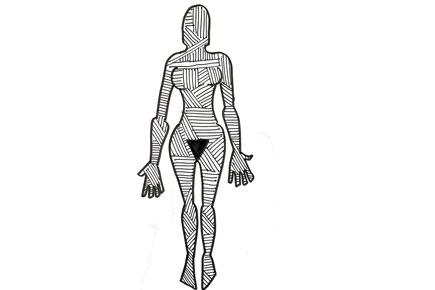If you want to project the temple of Ayyappa at Sabarimala in Kerala, and Hinduism as general, as an indicator of communal harmony, you can point to the dargah of Vavar-swami that is an integral part of the pilgrimage to the mountain shrine

 If you want to project the temple of Ayyappa at Sabarimala in Kerala, and Hinduism as general, as an indicator of communal harmony, you can point to the dargah of Vavar-swami that is an integral part of the pilgrimage to the mountain shrine. If you want to project the temple, and the religion, as a manifestation of patriarchy, you have to point to the practice of not letting menstruating women be part of the pilgrimage. Only men allowed in this temple — men who have spent at least 40 days in celibacy and thus ‘purified’. Someone recently mentioned need for scanners to filter out women in their periods, creating the usual media outrage.
If you want to project the temple of Ayyappa at Sabarimala in Kerala, and Hinduism as general, as an indicator of communal harmony, you can point to the dargah of Vavar-swami that is an integral part of the pilgrimage to the mountain shrine. If you want to project the temple, and the religion, as a manifestation of patriarchy, you have to point to the practice of not letting menstruating women be part of the pilgrimage. Only men allowed in this temple — men who have spent at least 40 days in celibacy and thus ‘purified’. Someone recently mentioned need for scanners to filter out women in their periods, creating the usual media outrage.
ADVERTISEMENT

Illustration/Devdutt Pattanaik
But, these shrines were not built either for communal harmony or to oppress women. These were practices that emerged slowly over centuries often resonating various ritual beliefs prevalent in society. These beliefs are based on a variety of mythic (non-rational) frameworks. The practice of restricting access to menstruating women is rooted in the pre-modern belief that links purity and power to bodily fluids. Not spilling male genital fluid (semen) makes men powerful and pure. Inability to hold back female genital fluid (menstruation) makes women weak and impure. This is why many babas and gurus of India insist they are celibate. That is why Jain munis rejected family life. This is why Buddha’s enlightenment is closely linked to his rejection of his wife. The red-tilak of Hindu men and the red-bindi of Hindu women has close links to blood and its links to life. Menstrual blood is particularly feared as it came to be associated with ‘death’ as it marked the failure of conception.
These ideas are ancient, orally transmitted, and are made explicit only in later Tantrik texts, though one is never sure if these texts should be taken literally or metaphorically.
While it is fashionable among self-hating upper-caste Hindus to mock Hindu practices, we must remind ourselves that occult beliefs related to bodily fluids are not restricted to Hinduism. Celibacy and menstrual taboos are found in tribal communities. In Japan, sushi is traditionally made only by male cooks as ‘menstrual cycle impacts female taste buds’.
It is found in Islam also. The story goes that the Prophet told his menstruating wife Aisha that during her periods she could not go around the Kabah during the Hajj. During periods, women were not allowed to touch the Quran. Can we attribute the Sabarimala practice to Hindu or Islamic taboos of menstruation considering the Vavar-swami influence? Or, to its Buddhist roots (Buddhist monasteries had more rules for women)?
Questions such as these are bound to create social media excitement. An anthropologist can argue that Jesus was born of a ‘virgin’ mother and never took a wife, because of these occult beliefs in bodily fluids.
Result of attempts to explain, or criticise, pre-modern practices using modern filters like caste, class, religion and gender is always problematic. It fuels outrage, but does not contribute to understanding. For example, at Kottankulangara Sridevi Temple in Chavara in Kerala, men cross dress for the presiding goddess during the Chamayavilakku festival. Here, you can see wives and daughters accompanying their cross-dressing husbands and fathers into the temple. Can we read this as rituals created to promote gender harmony? Or can we read this as an attempt to subvert the gender hierarchy of traditional Hindu society? Ask those who practice the ritual, and they will simply say it is an expression of devotion. Such simple answers do not get us doctoral degree in European or American Universities, or academic respect. We want the truth to be sinister, or titillating.
In Hinduism, as in most religions, there are rituals restricted to men and women. Men perform funeral rites (shraadh) and women perform fertility rituals (haldi-kumkum). As always, when understanding changes, rituals also change, despite fierce resistance. Nowadays, in many parts of India, women also perform funeral rituals. It is only time before men perform haldi-kumkum. Will that be a better, less oppressive society? I am not sure. As long as the rational feel justified in mocking rather than understanding the irrational, oppression will continue.
The author writes and lectures on the relevance of mythology in modern times. Reach him at devdutt@devdutt.com. The views expressed in these columns are the individual’s and don’t represent those of the paper.
 Subscribe today by clicking the link and stay updated with the latest news!" Click here!
Subscribe today by clicking the link and stay updated with the latest news!" Click here!






